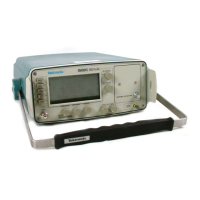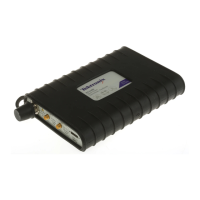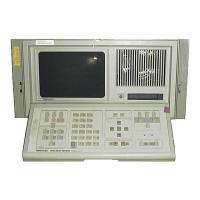Maintenance
6–8
1720/1721
Specific Troubleshooting Procedures
Two areas of the the 1720/1721 instrument require specific troubleshooting
methods. The power supply can not be worked on safely without using an
Isolation Transformer and following a specific troubleshooting procedure.
The Serial Port (Auxiliary Input) and the LED Driver circuits have specific
diagnostic routines. These should be followed to isolate problems quickly.
The power supply is of the high-efficiency type and requires a specific trouble-
shooting procedure and an isolation transformer to avoid personal danger or
instrument damage.
The 1720/1721 power supply presents special troubleshooting problems, if a
fault occurs. Besides having a sizeable area where dangerous potentials can be
contacted, the type of circuitry employed can not be troubleshot by conventional
means.
WARNING. Read Instructions:
Do not attempt to troubleshoot the 1720/1721 power supply without reading
these instructions.
NOTE. Read Theory of Operation:
A review of the power supply Theory of Operation is recommended before
attempting repairs.
The equipment needed to troubleshoot the power supply:
H Digital Multimeter (DMM), with a diode check function
H Oscilloscope
H 0 to 20 VDC Variable Power Supply
H Clip Lead – to short across a component
H High Voltage Probe, w1 GW input resistance
The Troubleshooting Procedure for the Power Supply (Assembly A1) is split into
two sections, the Low Volts and High Volts Supplies. Start the procedure by
Power Supply
Troubleshooting
Procedure
Introduction

